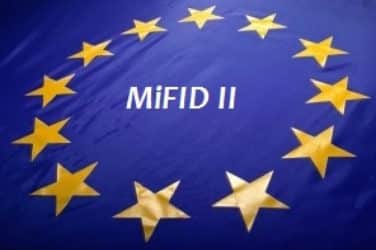MiFID II will Create New Costs for Asia-based Buyside Firms
- The EU’s updated Markets in Financial Instruments Directive (MiFID II) brings additional, non-EU-based financial institutions under its scope, subjecting them to many or all of the directive’s various requirements.
- GreySpark Partners anticipates that buyside firms in Asia-Pacific can expect to see their overall financial markets-facing costs rise as global investment banks comply with the regulations and pass the compliance costs onto their clients across a variety of different, long-standing front-, middle- and back-office services models.
LONDON – 25 May 2017 – GreySpark Partners has published a new report examining the impact of the MiFID II regulatory regime on banks and buyside firms in Asia-Pacific (APAC). The wider global reach of the directive and its accompanying regulations will ultimately create new costs for APAC-based buyside firms.
Specifically, GreySpark believes that many APAC-based asset managers and institutional investors will be forced to re-examine their historical operations and interactions with their investment bank counterparties to determine if any of the financial markets trading facilitated by banks on their behalf both within and outside the confines of the EU will be subject to MiFID II, and – if so – which regulatory requirements they will be obligated to comply with. The report, Mastering MiFID II: Asia-Pacific Implementation and Compliance, provides guidelines for both global banks and their APAC-based buyside clients on how to comply with the most challenging MiFID II requirements, including:
- trade and transaction reporting;
- the measurement of best execution across a variety of different types of asset classes and their associated exchanges and trading venues;
- the management of the change mandated by the regulations in how bank-produced trade research is bought and consumed by the buyside community;
- the implementation of pre- and post-trade risk controls; and
- new trading algorithm controls, documentation and registration requirements.
APAC-based buyside firms whose single- or multi-asset trading businesses interact with the EU marketplace in any way, shape or form must also determine which MiFID II-designated access model they will need to use to establish access to both individual EU member states as well as the broader whole of the EU single market. In some instances, GreySpark believes that banks and buyside firms that are unfamiliar with MiFID II may find that compliance with the new rules will require them to fundamentally recalibrate their business and trading models to account for the higher technology- and data management-related costs that come with many aspects of the directive, its accompanying regulations and the ways in which different EU member states will choose to implement their mandates.
As a result, GreySpark believes that many global banks – as well as APAC-only based banks that transact with client on both an intra-APAC and EU-facing basis – will need to embark on a buyside client education program over the next six-to-12 months in order to ensure that those clients fully understand and are prepared for the new trading compliance costs and financial markets services consumption rules contained within MiFID II.
Aliana Greenberg, GreySpark analyst consultant, said: “The costs associated with trading in the EU under the auspices of MiFID II could become prohibitively high for both large and small banks operating on a global basis and within APAC, specifically, where a large number of significant financial and non-financial buyside clients are historically based. These new costs will invariably alter long-standing models of interaction between those banks and their clients, and many banks will be forced to increase the costs associated with the provisioning of some financial markets services, which could then generally drive up costs across the board for trading and brokerage in general in APAC. It is thus incumbent on both banks and their clients to fully understand the consequences of MiFID II compliance in an effort to adopt new practices or evaluate existing services models to ensure that crucial, long-standing business and trading models can remain profitable for the foreseeable future.”
For further information on GreySpark’s research, please visit: http://research.greyspark.com or e-mail: press@greyspark.com




